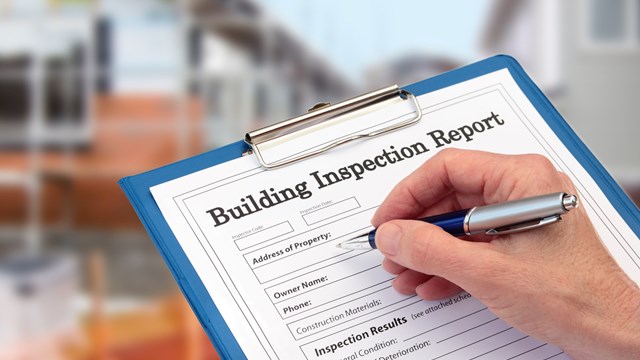When we think of product warranties, most of us think of the standard green registration cards that are found inside the box with the product alongside the operating instructions. We can register our new purchase by filling out the card and mailing it back to the manufacturer, or with Internet access, we can register at the manufacturer's Web site. In turn, we have a contract with the manufacturer that outlines the agreement of the warranty.
But how many of us have really read the warranty agreement? In many cases, we skip over the warranty altogether, except to know the basics, such as how long a product is insured and the cost of replacement parts and labor. Reading products warranty agreements is a bore, and most of us—even when we bother to register our high-ticket items in the first place—don't really pay as much attention as we should to the fine print. But toasters, TVs, and PCs aren't the only things that come with warranties. The roof of your townhouse or condo building likely has one too, and when the cost of an item or project tops six figures, reading and understanding the fine print isn't an option—it's a necessity.
For instance, if your own condo or townhouse had a new roof put on in the 1980s, your board or association may soon have to meet to discuss the looming need for installing a new one. Many questions arise: Which contractor's bid to accept? Which broker to go with? And the $64,000 question—is the money there?
A new roof is probably the most expensive capital improvement a building or association can undertake—so the warranties covering parts, labor, and the finished product need a thorough review.
A board or association may think if they have a 20-year warranty on their roof—or on their boiler, furnace, or HVAC system—they're absolved of worry for the next couple of decades, at least. Unfortunately, all warranties are not created equal, and the misunderstanding of a single clause could deal a serious, unexpected blow to an association's checkbook.
NOT Created Equal
Of course, the warranty for a new roof or a brand-new HVAC system are a lot more complex than the little card that came with your bread maker. The contractor and/or dealer and the people doing the actual construction also have warranties for labor—and may or may not offer extensions on those warranties. Insurance brokers even offer separate policies that can be purchased as additional coverage.
All the pros agree, however—before delving into any discussion of warranties and insurance, it's vital that boards, associations, and managers keep up the maintenance of their physical plant. Waiting until the roof is leaking or the boiler's on its last leg only drives up the cost of repair or replacement, and raises the risk of serious damage and liability in the meantime.
Just Raise the Roof
Jason Fox, the president of Astral Construction/Abacus Group Ltd. in Bergenfield, an exterior restoration and roofing company, says that warranties come two ways—prorated and non-prorated—with significant differences dividing one from the other. Fox warns that a prorated warranty is typically a part of insurance policies, and gives an example; "If a roof is five years old and needs replacing, what the broker then says is, 'Okay, the average life of a roof is ten years and you've gotten half the value so I'm going to replace half the roof.' The broker then goes ahead and pays for the cost of replacing half the roof, which leaves the association to pay the other half. This is a warranty that comes as 'prorated.'"
Fox continues, "If [the association] is willing to pay a little bit more, then they can get a 20-year, no-dollar limited warranty." This particular type of warranty is generally reserved for roofs. Also known as non-prorated warranties, Fox says, "The 'no-dollar limit' means that if in 10 years the whole roof needs to be replaced because it has failed due to material problems, whatever the cost is at that time, the manufacturer will incur that cost and replace the whole roof." The association can choose this as an option.
Well, It's Not My Fault
According to Robert Fouse, president of Specialty Building Systems, a waterproofing specialist in Easton, Pennsylvania, "Any product should be installed by a certified, trained installer—meaning the installer has gone to a class and has learned the proper way to put down the product. The installer [or dealer] tends to give his own labor warranty, which can be anywhere from one to 10 years."
"The manufacturer covers all material under warranty," Fouse continues. "The dealer who installs the waterproofing should check the labor warranty to make certain that it hasn't expired. The association should also have a copy of all warranties."
Fox explains how a question of who pays is typically answered; "Take a roof, for example. The roof has been installed, it's three years old, and all of a sudden there's a leak. The association calls up the contractor who says, 'Okay, I'm going to come out, but if the problem isn't mine—if it's due to something that's not my work—I'm going to charge for a service call."
In such circumstances, Fox says that if the contractor's work is at fault, then it is up to the contractor to fix the problem. However, he says, "If, let's say, a [heating and cooling] contractor was up on the roof doing something to the HVAC unit and popped a hole in the roof, then that roofing contractor would not be at fault—and would then charge for a service call [to fix the damage]."
Fox and Fouse agree that associations take the quality of actual products to be used into consideration when deciding on roofing and waterproofing, and any other big-ticket capital improvement jobs. The same goes for bids from contractors or installers. Going with the lowest bid, the least expensive material, or an unproven contractor or installer can cripple a capital improvement project and cause major problems down the road. Cheaper is not always better—they say, particularly where building materials and methods are concerned.
Insurance is a Good Policy
And there's yet another reason to look into the warranties on your association or building's capital purchases. Fox points out what might be a drawback of ordinary insurance policies in lieu of full-coverage, non-prorated capital warranties. "What the insurance broker does is establish a lifetime—say a 25-year—warranty, with a new boiler, for example. If the boiler blows up in 15 years, the broker will say that the association already received 75 percent of the life of that boiler and therefore will only be paid 25 percent [of its purchase price] towards a new boiler." Fox goes on to say that if an association wants something more from their insurance, " [We] have to put in place some sort of umbrella policy, or gap insurance to cover a shortfall between what insurance companies will pay versus the actual replacement cost of the item." Having an umbrella policy helps associations reduce their out-of-pocket capital improvement expenses, he says.
When doing a capital improvement job, a responsible contractor will look at setting up insurance policies to work alongside capital improvement warranties with a view to saving associations money. According to Fouse, "Insurance companies always look for something referred to as reinsurance—or laying-off the risk. If they can determine that the major ticket item is covered by a substantial manufacturer, that's considered laying-off the risk, and the insurer might give the association a credit on [their] insurance policy."
Not all insurers go for that, however, especially when major capital improvement equipment is involved, Fox says. "It might be something that an association should check with their insurance broker on when they're planning [a capital improvement project] and say 'Look, we're considering spending 'x' amount of money to get a warranty, so is there really going to be a savings?' And if their insurer says no, that association might want to check several other brokers to see if they could offer a better deal."
Written Warranties and Extensions
Just because most warranties are computed into the price, doesn't mean you can't get something concrete in writing. Fouse says it's important to ask about a written warranty. "There is a written-warranty card that associations can get [on certain products] and they should ask the dealer or certified installer for it." Fouse goes on to say that it is possible to have an extended warranty on labor, which is something that can be worked out between the association and the dealer.
According to Craig Berlin of Chute Master Indoor Environmental in Union, a company that sells and services compactors to condo and co-op buildings, the standard one-year warranty on nearly all major building equipment can be extended a year or two for an additional fee at the time of installation.
"There are two kinds of extensions," says Berlin. "A preventative maintenance kind, which means [the contractor] comes in once a year and does a check of everything," Berlin explains. The contractor will check for things such as oil, perform routine maintenance and make adjustments, for example, to the wiring, that will potentially extend the life of the equipment, he says.
"The second extension to the warranty," Berlin continues, "is a service contract, which includes some risks on our end. We're betting that the machines don't go down. In fact you're betting the same thing if you're [representing] the building. It will usually cover everything except the most major of repairs, but it doesn't include abuse or fire." This allows condos and co-ops to set up in the budget "a reasonable time span" that they can expect the equipment to last, Berlin says.
Support, Standards and Exclusions
There are important questions to ask about capital improvement warranties. First, associations have to know who backs the warranty—whether it's the manufacturer, the contractor or supplier/dealer or a third-party insurance company—and there needs to be an understanding of the warranty standards, such as what's covered and what's not. There are exclusions to every warranty and they have to be taken into consideration. Similarly, the association's legal and financial counsel should make sure that the chosen manufacturer has funds set aside to remedy any major product failure. In many instances, a roof replacement for multi-unit condos, co-ops or townhouses can cost millions of dollars.
Clearly, there are huge differences between a single, big-ticket purchase—like a computer or big-screen television—and capital investment purchases like a roof or waterproofing project. Instead of there just being one buyer and one seller, there's a buyer, an association and its members, contractors, insurance brokers, trained technicians to locate problems, and finally, the homeowners who are trusting their investment to the decisions of an informed, concerned board of directors. Reading and understanding a warranty is important enough when one is dealing with a washer/dryer or a new plasma TV. But when it's literally the roof over your head we're talking about, understanding the interaction between insurance, warranties, and workmanship take on a whole new importance.
Shirley Sergent is a freelance writer based in Manhattan.







Leave a Comment